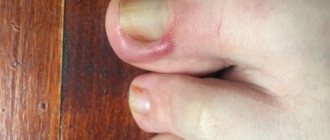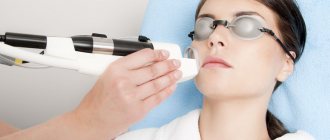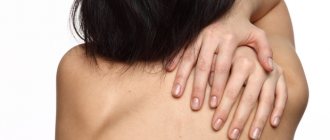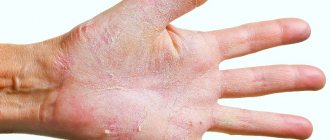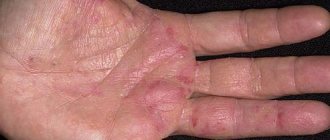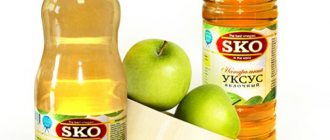Concept of method
Cold is used for treatment very widely. Low temperature provides an instant effect of anesthesia even with a large area of damage, helps to activate blood circulation, improve lymphatic drainage, and so on. Excessive exposure to cold leads to irreversible tissue destruction - necrosis. However, even this effect turns out to be useful in the treatment of a number of diseases.
The change is mainly due to the transformations that water undergoes. When cooled, it turns into ice directly in the tissues. Accordingly, tissue cells are compressed by ice: first, the intercellular fluid freezes, and then intracellular frostbite occurs. As ice crystals form, they rotate around the center of crystallization and literally “cut” cellular and intracellular membranes.
During freezing, blood circulation stops, the supply of oxygen and nutrients stops, all biochemical reactions stop and the cells die. In addition, freezing causes a jump in osmotic pressure, which the cells also cannot tolerate.
When healthy tissue is damaged, severe frostbite occurs, leading to tissue necrosis. But if pathologically altered tissues - warts, papillomas, condylomas - are subjected to this effect, not a trace will remain of them either.
The required cooling temperature is -60 C. After this, the cell does not survive, but this temperature can only be achieved in the freezing center. In fact, this is an advantage of the technology, since at such a low temperature the surrounding healthy tissue would also die. In addition, the available cooling temperature is also taken into account: a temperature of -20 – -30 C is sufficient for the skin.
Freezing and thawing is carried out at least three times: in this way, it is possible to reduce the temperature that is lethal for the pathological tissue and thereby preserve the surrounding tissues in a healthier state. In addition, it is necessary to ensure that the depth of the freezing focus is greater than the depth of the tumor, otherwise a sufficiently destructive effect will not be achieved.
The effect is not immediately noticeable. Cryodestruction does not lead to instant cell destruction. It takes about 3–4 weeks for the tumor to die. After treatment, the skin turns white, hardens, and after a couple of days a bubble forms on the area, reminiscent of the consequences of frostbite or burn. The affected area is literally dead and removes itself. The resulting crust also cannot be picked off on your own: the crusts will fall off on their own after drying.
Cryodestruction as a method is described in this video:
Benefits of cold treatment
Unlike other instrumental methods, cryotherapy:
- does not violate the integrity of the skin and mucous membranes, is non-invasive, and as a result there is no danger of contracting AIDS or hepatitis;
- It is much easier to tolerate than traditional surgery, almost painless, and does not require expensive pain relief;
- is bloodless, frozen pathological tissue is bloodlessly rejected in the process of natural restoration of the pharyngeal mucosa;
- provides a minimal risk of postoperative complications such as bleeding, formation of rough scars and adhesions in the delayed period;
- does not require hospital stay, does not reduce the patient’s ability to work (with the exception of professions associated with hypothermia or heavy physical exertion);
- gives a high cosmetic effect after wound healing;
- helps stimulate lymphoid tissue to restore and improve the immune status of ENT tissues;
- and most importantly, after cryodestruction, the mechanism of nonspecific and specific antitumor, antiviral, antimicrobial immunity is launched. Autoimmunization (autovaccination) occurs due to the absorption of decay products of pathological tissue and bacterial particles into the bloodstream.
Today, doctors at the Lor Plus clinic, using the latest cold techniques, can help you and your baby get rid of frequent colds, acute respiratory viral infections, chronic runny noses, as well as recurrent sore throats and pharyngitis.
Cryodestruction methods
Fundamentally, only two approaches are distinguished: direct exposure and freezing using an applicator.
- The direct impact is carried out by supplying liquid nitrogen in various forms. For example, cryo-irrigation - the surface of the skin is exposed to a stream of nitrogen or its saturated vapor. It is possible to use dosing devices: falling drops of liquid nitrogen. This method is more convenient for small objects, but in large quantities - flat warts, for example. Also, liquid nitrogen can be supplied on cotton wool. This is the simplest method, which is actively used in cosmetology. Occasionally, liquid nitrogen is injected into the tissue if possible.
- The application method boils down to introducing a heat-intensive metal probe into liquid nitrogen, and then bringing the probe into contact with the damaged tissue. This type of cooling can be passive or active. Passive - the probe heats up upon contact with the skin, releasing cold.
- Active - the probe or applicator plate is connected to a device that circulates refrigerant and constantly cools the plate. An already cooled probe can be applied to the affected area, or you can first ensure contact and then cool the plate. With active cooling, the probe can be immersed deep into the tissue if the tumor is not on the surface.
The second method is considered more reliable, since it takes into account the adhesive effect: the applicator is moistened, heated, applied to the tumor, then frozen. In this way, the tightest contact and greater depth of complete freezing are achieved.
Types of warts
Experts distinguish several types of these benign neoplasms of the skin:
- ordinary (they are also called vulgar);
- plantar (a type of ordinary);
- flat (youth);
- senile (keratomas) are age-related skin changes and are not associated with viral etiology.
In addition, the following often occur on the skin:
- papillomas;
- genital warts.
How to recognize a wart?
The external manifestations of warts are quite typical and if you decide to remove warts with nitrogen, then you need to identify it.
Signs of a wart:
- education does not hurt;
- a growth that rises above the skin level is devoid of a specific skin pattern;
- a young neoplasm is characterized by a shiny and smooth surface, while an old one has a rough surface;
- the formation is very dense and hard;
- the color is practically no different from the surrounding skin;
- sizes vary - from a few millimeters to a centimeter;
- the formation can be single, or it can multiply, then whole groups of warts appear, which can even merge with each other;
- in the depths of the growth you can see black dots - a sign that it is growing.
The favorite localization of skin growths is the hands. Because hands are most often injured and contact with the virus carrier and contaminated objects occurs through touching hands.
Advantages and disadvantages
Cryodestruction is on the border between surgical and therapeutic methods. Of course, there are no incisions or punctures, the integrity of the skin is not compromised, and so on. However, the cold-treated area self-destructs and removes itself after 3-4 weeks, which is more reminiscent of the consequences of invasive treatment.
The method has a number of advantages that make it indispensable in its field:
- cryodestruction is used in the treatment of almost all benign and some malignant tumors on the skin;
- the procedure is absolutely painless: upon contact with cold, the tissue instantly loses sensitivity;
- healthy tissue develops very quickly in place of the removed tissue;
- in most cases, no scars or spots remain, skin hyperpigmentation is possible;
- there is no bleeding;
- removal of the tumor by cryodestruction eliminates the re-development or spread of pathological cells. According to data, tumor recurrence is observed in 2% of cases.
The disadvantages of this method include the following:
- the result is not immediate: from the development of necrosis to the self-removal of the tumor, 3–4 weeks pass;
- not suitable for removing large neoplasms.
Cryodestruction Ekaterinburg. Cryodestruction. Removal of skin tumors.
Cryodestruction is one of the methods of cryotherapy, a method of removing various tumors, using fractions of liquid nitrogen as treatment - a gas without color, taste and smell. When treating an area of skin with liquid nitrogen, the tissue destroyed by cold is not removed, but remains in place, forming a protective “crust” that covers the wound and protects it from possible infection. Removal of tumors using liquid nitrogen is painless - the patient only feels a chill and slight numbness in the treated area.
Wounds after cryodestruction heal quickly and without consequences. Some time after the procedure, the wound becomes covered with a dry crust, under which healthy tissue grows. The wound after cryodestruction does not need any special treatment, and the wound itself can be wetted just a few hours after the procedure, which is very convenient if, for example, it was removed on the arm. The mechanism of the cryodestruction process is as follows. Fabrics are instantly cooled to ultra-low temperatures. This leads to the simultaneous freezing of intercellular and intracellular water with the formation of ice microcrystals and an increase in the concentration of cellular substances to a toxic level. The vital activity of the cell is disrupted, membrane and cellular structures are damaged, and the movement of protoplasm in the pathological tissue stops. The higher the freezing rate, the deeper and more effectively the pathological tissue is destroyed. Freezing of tissue is accompanied by a hemostatic effect due to disruption of microcirculation in the capillaries.
Relation to laser
Both methods are equally effective for removing skin formations and both have one drawback: due to the complete destruction of the formation, it is not possible to conduct a histological examination for control. In general, laser therapy is considered more effective due to some differences.
- Focusing and selecting the wavelength allows you to more accurately determine the desired processing depth and work with higher selectivity. The focus of the “lesion” during cold treatment is less precise and often involves healthy tissue.
- After laser treatment, the skin usually heals faster. In addition, the appearance of edema is practically eliminated.
- In terms of painlessness, the method is noticeably inferior to cryodestruction.
- Laser therapy is in any case much more expensive than other methods.
Indications for testing
The possibilities of cryodestruction are not limited to formations on the skin alone. The procedure is effective in removing cysts on the cervix, pseudo-erosion, leukoplakia, papillomas and condylomas in the vagina, and so on. However, the method still finds its main application in dermatology.
Cryodestruction is prescribed for adults - men, women, and children. The method has no age restrictions. It is also possible to carry out the procedure during pregnancy, since no portable or medicinal intervention occurs in this case, and, therefore, the intervention does not in any way affect the condition of the body or the development of the fetus.
Cryodestruction is used in the treatment of all types of benign tumors and some malignant ones. The depth and form of impact is dictated by the area of the lesion and the depth of the lesion. The duration and number of procedures is determined by the nature of the disease.
- Pigmented tumors - nevi or moles. A variety of benign tumors that can have very different appearances. They are formed from pigment-forming cells - melanocytes. There are congenital and acquired forms. The latter are more prone to malignancy. Localized in various parts of the body. Nevus can be quite successfully removed by cryodestruction, including the most dangerous of them – borderline nevus, which is most prone to degeneration. The exposure time - treatment of a single lesion area - is very short - 180 s for any form of nevus. For small lesions – 1 cm in diameter, 1 session is sufficient.
- Warts are neoplasms in the form of a nodule or papilla. As a rule, they are formed under the influence of various viruses. Localization depends on the type: juvenile condylomas often form on the face and hands, ordinary condylomas often form on the hands, condylomas form in the intergluteal folds, in the vagina. Warts are removed both by the application method and by direct exposure to liquid nitrogen. To remove ordinary condylomas, 240–300 s of contact are required, plantar condylomas – 180 s, genital warts are destroyed in 40–60 s.
- Keratosis is keratinization of the skin against the background of hypertrophy of the epidermis. If the area is large, the formation must be removed, as there is a risk of malignancy. Liquid nitrogen copes with lesions in 180–210 s.
- Papillomas are a type of benign tumor caused by papillovirus. The latter is transmitted from person to person. The tendency to degeneration is high, so papillomas should be removed whenever possible. A single lesion treatment session takes 120–180 s.
- Leukoplakia is a disease of the mucous membrane. Often observed on the tongue, in the oral cavity, in the vagina, on the cervix and head of the genital vulva. Leukoplakias are removed in 60–120 s.
- Hemangiomas are bright red formations of irregular shape. They appear in the first years of life and regress as the child grows. As a rule, by the age of 7 they disappear. If recovery is delayed for some reason, cryodestruction is resorted to.
- Keloids are scars, an accumulation of fibrous tissue left after injury, surgery, or other mechanical damage to the skin. The scars are safe, but they look unsightly. Radiotherapy is ineffective here, but exposure to liquid nitrogen may be beneficial.
- Condylomas are also caused by infection with one of the papilloviruses. Most often they occur in the vagina, scrotum, and anus and are transmitted mainly through sexual contact. Cryodestruction, laser therapy and radio waves are used for removal. Although cryodestruction is the most popular method of disposal, it is still believed that laser in this case gives the best effect.
- Calluses are keratinization of the skin that occurs as a result of mechanical factors: friction, compression. Most often it appears on the feet and hands. Calluses do not pose any danger and often go away on their own. Depending on the density of the increased keratinization, the procedure takes 30–120 s.
- Basal cell carcinoma is a type of skin cancer that occupies an intermediate position between benign and malignant tumors. It differs in that it practically does not metastasize. Therefore, excision of the source of the disease in 98% of cases results in complete recovery. Cryodestruction in these cases is perhaps the most effective remedy, while the use of laser is very limited. However, only the direct application method is suitable for treatment, since the application method does not provide the proper freezing depth.
The procedure is performed on an outpatient basis, the number of sessions depends on the area of the lesion. To remove the superficial form, the session time is 180–240 s, nodular – 240–300 s, ulcerative and other types – 240–300 s. In the latter case, monitoring the completeness of the lesion is especially important, therefore, after cryodestruction on days 3.10, scrapings are taken for histological examination.
The video below will tell you how papillomas are removed using this method:
Cryotherapy technique
Today, cryotherapy is perhaps the only method that allows one to avoid surgical treatment and at the same time preserve the functions of the ENT organs.
Using a special tool - an applicator, the fabric is sharply cooled for 10-15 seconds.
The procedure is performed on an outpatient basis and lasts several minutes. Within a few minutes after the procedure, the person experiences a feeling of discomfort and pain. The patient's condition after the procedure is usually satisfactory.
The huge advantage of cryotherapy is that due to the immunostimulating effect of ultra-low temperature, rapid tissue regeneration occurs, and the condition of healthy surrounding tissues also improves. Local and general immunity is noticeably increased.
Contraindications
There are certain contraindications, usually associated with the state of the body that does not allow exposure to low temperatures:
- inflammatory diseases of the genital organs or chronic in the acute stage;
- sexually transmitted infections;
- myoma;
- endometriosis;
- suspicion of oncological diseases of the reproductive area. When treating dermatological diseases, and not mucous membranes, the prohibition does not apply;
- cicatricial cervical deformity of the uterus;
- exacerbation of somatic diseases.
A relative prohibition is the stage of the menstrual cycle: removal of a tumor in the vagina or cervix is carried out in the first week of the cycle.
The use of cryotherapy for various diseases
Cold treatment is effective for many diseases of the ENT organs:
- chronic tonsillitis ,
- recurrent nosebleeds from the nasal septum,
- vasomotor rhinitis,
- hypertrophy of the palatine tonsils,
- chronic hypertrophic pharyngitis,
- benign neoplasms of the nasal cavity, pharynx,
- skin diseases of the external nose and ears.
The most important thing is that there are practically no contraindications for cold treatment (except for acute inflammatory processes), and in some cases it is even carried out for pregnant women.
How is the procedure performed?
The procedure does not require any preparation, is performed on an outpatient basis, and does not have any effect on well-being. Cryodestruction is prescribed by a dermatologist after examining the surgical area. In some cases, a biopsy of the area is performed to confirm the diagnosis.
The procedure is performed the same for all patients of any age. If sensitivity is very high, you can take a painkiller tablet or be satisfied with local anesthesia. Cryodestruction does not cause pain as such. However, the touch of cold metal can be unpleasant, especially for a small child.
- The patient is positioned on the couch in a position that provides free access to the treated area.
- The nozzle is selected: its diameter should exceed the size of the formation by 2–3 mm. When treating basal cell carcinomas, the area is overlapped by 0.5 cm around the perimeter.
- The area is treated with a solution of brilliant green in the first session and sea buckthorn oil in subsequent sessions.
- A tip or cotton swab cooled in nitrogen vapor is applied to the affected area. The technology and retention time depend on the nature of the disease.
If necessary, the session is repeated - usually 2-5 times. In some cases - parakeratosis based on fibrous tissue, for example, the cooling time is reduced to a minimum, but the procedure is repeated 2-3 times during 1 session.
Technical features of the procedure
Cryodestruction of cervical erosion and other changes is considered a technically simple procedure. To carry it out, you need a special cryoprobe and a container with a freezing substance (liquid nitrogen, carbon dioxide). When the liquefied gas is released, it becomes very cold, deep-freezing the tissues, turning the liquid inside the cells into crystals.
Cryodestruction causes tissue necrosis from the pathological focus. After half an hour, ischemic and necrotic changes increase, blood vessels spasm and thrombose, and swelling becomes pronounced. Local inflammation provoked by low temperatures intensifies and reaches a maximum by the end of the first week, which is accompanied by copious watery discharge. After about three weeks, the inflammation subsides, and a scab (crust) forms at the wound site, after which the defect is replaced by normal surface epithelium.
For cryodestruction of the cervix, the patient is placed in a gynecological chair. During the manipulation, she is conscious, and anti-inflammatory drugs and analgesics can be used to reduce discomfort.
The genital tract is disinfected, a gynecological speculum is placed in it, then the cervix is treated with Lugol's solution to better see the boundaries of the pathological focus. A cryoprobe inserted into the vagina is pressed against the erosion site for 2-3 minutes, followed by a defrosting period of about 5 minutes. If necessary, repeat freezing. You cannot immediately remove the probe from frozen areas; it must separate on its own, because without thawing it can tear off a piece of tissue. Upon completion of cryodestruction of the cervix, the woman can use a sanitary pad and leave the clinic.
Video: cervical cryodestruction technique
Consequences of implementation and possible complications
After removing the scab - independently, a delicate pink scar is formed. However, after 2-3 months it disappears. Changes in skin pigmentation are possible.
The procedure may have complications. In 2–3% of cases, suppuration was observed under the scab. In this case, the crust must be removed until it is completely healed and the wound must be treated with hydrogen peroxide. As the pus is removed, they move on to gauze bandages. In this case, the healing time is extended, but scar tissue does not form on the damaged area.
Recovery and care after the procedure
Cryodestruction does not provide instant results. Pathological cells die during freezing, and the surrounding tissues are also subjected to excessive cooling. The doctor determines the border of necrosis in advance so that healthy tissue is damaged as little as possible. However, the process of shedding dead cells takes some time.
- Swelling develops 40–60 seconds after the procedure. It is especially noticeable in places with well-developed subcutaneous fat.
- After 2–5 hours, a papule with serous-hemorrhagic or serous contents forms.
- After 2–5 days, the papule opens and the wound surface opens.
- Within 5 days the swelling subsides.
- On days 4–7, a crust forms on the wound, healing under it proceeds from the periphery to the center.
- The scab is shed after 3–4 weeks. At first, a pink scar is noticeable on the skin, but after 2-3 months it disappears without a trace.
Patient's condition after the procedure
Most patients experience no complications after cryodestruction; the manipulation is well tolerated by patients. Wound healing after cryodestruction occurs according to the type of aseptic exudative inflammation. This explains the fact that on the first day after surgery, body temperature may rise to subfebrile levels (37-37.2 degrees).
Pain in the throat may last 3-4 days. The maximum pain disappears within the first day. Every other day, a gray coating may appear, which disappears in 5-10 days.
If pain occurs at the site of exposure, the patient is usually prescribed painkillers, taking into account individual tolerance.
Reviews
Cryodestruction is a simple, affordable and extremely safe method of removing a wide variety of benign and sometimes malignant tumors. It causes no discomfort at all, is very effective - 98% of cases without relapse, and is affordable.
Compared to laser technology, the method is considered somewhat outdated due to the inability to accurately control the penetration depth. However, in many cases, only direct exposure to liquid nitrogen can achieve healing.
Where in Russia can you get this treatment?
The technique is very simple, safe, and the equipment is more than affordable. If necessary, the office can be organized on the basis of a regular district or city hospital. Therapeutic cryodestruction services are provided by regular large clinics. Cosmetic removal of skin lesions is also possible in a professional cosmetology salon.
Cryodestruction is a safe, simple and very effective method for removing benign tumors on the skin. The procedure takes minimal time, requires some recovery time, but is extremely effective and easy to implement.
Removing warts with liquid nitrogen is shown in this video:
Cryodestruction of basal cell carcinoma: wound care, possible complications – Website about nutrition and health
Cryodestruction as a method appeared in 1890. It began to be used for the treatment of basal cell carcinoma and squamous cell skin cancer only in 1960. Over time, cryodestruction of basal cell carcinoma has improved and reached maximum efficiency (only 7.5% of relapses); special equipment and techniques have appeared. Nowadays, cryodestruction of basal cell carcinoma is a safe and effective treatment method.
From the article you can find out what are the advantages of the method, indications for its implementation, the basics of the method (where does antitumor immunity come from?), how the procedure goes, how to care for a wound after cryodestruction, side effects, contraindications
Cryodestruction care after the procedure
- 01 August
- 0 rating
- There are several methods for removing warts.
- One of the most common is cryodestruction.
- It is based on the use of liquid nitrogen.
- The main property of the substance is the ability to destroy epithelial skin cells.
- After cryodestruction, special care for the resulting wound is required.
- Read our article about why wound care is so important, how long it takes to heal, and what consequences there may be.
Why is caring for a wart after cauterization with nitrogen important?
Human papillomavirus is quite common . But not in all cases it is characterized by the appearance of warts on the body. Removing the growth is a mandatory procedure, as it causes significant discomfort.
Under the influence of low temperature, the growth cells die off . Its color becomes white by the end of the procedure. The total duration of medical procedures does not exceed one minute.
A bubble appears in the place where the wart was previously located. Swelling forms in the adjacent area (plantar or some other area). Treatment of the wart after cauterization with nitrogen is required.
Without proper care, the wound can become infected. There is also a high risk that an unsightly scar will remain at the site of the wart.
In some cases, a repeat cryodestruction session may be required.
The level of discomfort during cryodestruction depends on the person’s pain threshold. There may be a burning and tingling sensation in the area of the wart . In some medical institutions, it is customary to use painkillers. Before performing cryodestruction, it is advisable to determine the nature of the appearance of the wart. Removal is carried out only with the permission of the attending physician.
What to apply?
The bubble formed at the site of the wart must be protected from mechanical damage. You should also exclude the possibility of water getting on it.
Damage to new layers of epithelium causes increased growth of connective tissue. As a result of this, scars form on the skin. Step-by-step wound care instructions include the following:
- Treat wounds with a solution of salicylic acid or potassium permanganate, twice a day.
- After the crust falls off, anti-inflammatory therapy is used in the form of transdermal agents (Solcoseryl, Methyluracil, Hydrocortisone ointment).
- To prevent scarring, Contractubex gel is most often used.
During the wound healing process, it is strictly prohibited:
- Cover the wound with a plaster or bandage it.
- Expose to ultraviolet light.
- Apply cosmetic products to the damaged area.
- Touch the wound with dirty hands.
- Tear off the crust.
- Visit saunas, swimming pools and baths.
Now you know what to do after cryodestruction.
How long does it take to heal?
On average it takes two weeks to heal . The blister bursts approximately 5-7 days after cryodestruction. The dead growth just needs to be cut off with forceps. Then a crust forms. It drags on for at least a week. The length of the rehabilitation period is greatly influenced by the size of the wart, the professionalism of the doctor and compliance with the rules of wound care.
If an anesthetic is used during cryodestruction, it is necessary to first test for allergic reactions.
The skin's ability to regenerate varies from person to person . The healing time may be prolonged if complications arise. In this situation, timely assistance from a specialist is required.
Possible complications
Even if all safety measures are observed, there is a possibility of developing unpleasant complications after cryodestruction. Damage to the bubble formed at the site of the papilloma can lead to an inflammatory process.
The wound becomes vulnerable, so caring for it in this case should become more meticulous. You should frequently treat the injury site with any antiseptic. The presence of pus in the wound is a reason to consult a doctor .
Sometimes a pigment spot appears at the site of the growth after healing. It occurs as a result of exposure to ultraviolet radiation during the healing process. To prevent its occurrence, you should adhere to the following principles:
- Avoid visiting the solarium.
- Do not expose the wound to the sun.
- After the crust falls off, you should use sunscreen.
The incompetence of the doctor involved in cryodestruction can lead to the wart appearing again in the same place. This happens when the roots of the growth remain deep in the skin. To avoid such situations, it is recommended to carefully choose a specialist.
And this is what a wart looks like in the photo before and after the cryodestruction procedure:
Contraindications for cryodestruction
Cryodestruction is very popular. It stands apart from other wart removal methods due to its many advantages. These include the following:
- exposure to low temperatures does not allow the virus to spread throughout the body, thereby preventing the appearance of new papillomas;
- no bleeding occurs during cryodestruction;
- when the wound heals properly, there is no pain;
- the crust formed at the site of the wart protects the wound from infection.
Source: https://biomed-kaluga.ru/diety/kriodestruktsiya-bazaliomy-uhod-za-ranoj-vozmozhnye-oslozhneniya.html

